|
Notes: Old Mill Lane was a halt situated on the London North Western Railway (LNWR) St Helens – Rainford Junction line. The line had originally been opened by the St Helens Canal & Railway Company on 3 February 1858 and had become part of the LNWR on 1 August 1864. Rainford Junction was located on the Lancashire & Yorkshire Railway’s (LYR) main line (opened in 1848) between Liverpool Exchange and Wigan Wallgate. There was also an LYR branch from Rainford Junction to Ormskirk (opened 3 March 1858), that also had an end on connection to the LNWR at a point just to the west of Rainford Junction station, which in effect made a through route between St Helens and Ormskirk. Although there was a through route most passenger trains on both lines terminated at Rainford Junction and only goods services passed directly along it. The line was originally single track but it was doubled between Rainford Village and Gerrards Bridge in 1890.
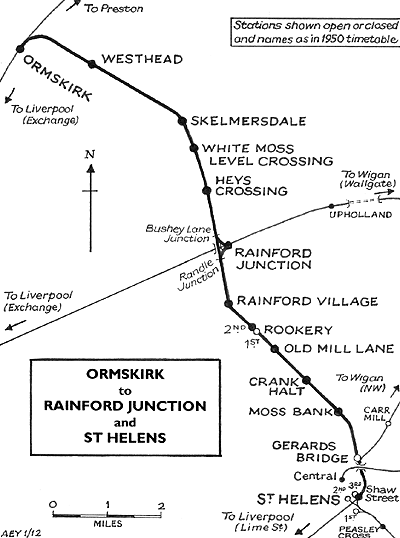 Old Mill Lane was located to the west of the small settlement of Crank on the lane after which it was named. The lane crossed the line by means of a level crossing. Old Mill Lane was located to the west of the small settlement of Crank on the lane after which it was named. The lane crossed the line by means of a level crossing.
The halt opened on 1 August 1906. It was located on both sides of the level crossing the down platform (St Helens direction) being to the north and the up platform (Rainford Junction direction) being to the south. Both platforms were identical timber structures that had no shelters. At the southern end of the up platform there was a small timber ticket hut.
There was a signal box at Old Mill Lane that controlled the crossing. It was located on the down side of the line to the south of the crossing and had opened in 1890 when the line was doubled (replacing an earlier box that had opened in 1881). The box was an LNWR Type 4 with a 20 lever frame.
On the north side of Old Mill Lane to the west of the halt there was a pottery works that was probably the reason why the halt was provided. The works had its own siding which was directly opposite the up platform.
Branching off from the main line to the south of the halt there was a siding that curved to the east and ran to another works.
Passenger services ran between St Helens and Rainford Junction where connections could be made with the LYR main line services running between Liverpool and Wigan and also with Ormskirk branch services.
Old Mill Lane must have not generated the levels of traffic that the LNWR had expected because it vanished from the timetable after April 1907. It is possible that trains called there for workers but there is no evidence to say that they did.
On 1 October 1911 the LNWR introduced a railmotor service onto the St Helens and Rainford Junction service and Old Mill Lane reappeared in the timetable from that date. The service did not use an actual rail-motor as it would not have been adequate. Instead locomotives and coaches equipped for push and pull working were used. A couple of services did run between Ormskirk and St Helens but they called at Rainford Junction where a reversal was necessary.
 On 1 January 1922 the LNWR took over the LYR bringing the entire route between St Helens and Ormskirk under the control of one company. The passenger service pattern remained the same though with Rainford Junction being the point at which both St Helens and Ormskirk services mostly terminated. The July 1922 timetable showed 13 up and 13 down trains Monday-to-Friday. There was an extra train in each direction on Saturdays and there were three trains each way on Sundays. On 1 January 1922 the LNWR took over the LYR bringing the entire route between St Helens and Ormskirk under the control of one company. The passenger service pattern remained the same though with Rainford Junction being the point at which both St Helens and Ormskirk services mostly terminated. The July 1922 timetable showed 13 up and 13 down trains Monday-to-Friday. There was an extra train in each direction on Saturdays and there were three trains each way on Sundays.
On 1 January 1923 the LNWR became part of the London Midland & Scottish Railway (LMS). During the 1920s ex-LYR railmotors appeared on the St Helens-Rainford Junction line sometimes with an extra coach coupled to them. By the 1930s though locomotives with coaches, fitted to work as push and pull trains, were the norm the usual motive power being ex-LNWR Webb Tank locos.
The LMS summer timetable for 1932 showed 15 up and 15 down trains Monday-to-Friday. There was an extra down and 2 extra up trains on Saturdays but there were no Sunday trains.
The service was reduced during the Second World War and afterwards it did not recover to its pre-war levels. The LMS timetable for 1947 showed 8 up and 8 down services from Old Mill Lane Monday-to-Friday as seen in the table below. There were an extra 3 trains in each direction on Saturdays. There were no trains on Sundays.
Down Trains Summer 1947 |
Destination |
Up Trains Summer 1947 |
Destination |
6.54am |
St Helens |
6.35am |
Rainford Junction (With through connection to Ormskirk) |
7.49am |
St Helens |
7.08am |
Rainford Junction (With through connection to Ormskirk) |
8.40am |
St Helens |
8.08am |
Rainford Junction (With through connection to Ormskirk) |
1.34pm |
St Helens |
12.18pm |
Rainford Junction (With through connection to Ormskirk) |
2.24pm (Saturdays Only) |
St Helens |
1.03pm (Saturdays Only) |
Rainford Junction |
4.44pm |
St Helens |
4.17pm |
Rainford Junction (With through connection to Ormskirk) |
5.42pm |
St Helens |
5.11pm |
Rainford Junction (With through connection to Ormskirk) |
6.37pm |
St Helens |
6.13pm |
Rainford Junction (With through connection to Ormskirk) |
7.39pm (Saturdays Only) |
St Helens |
7.05pm (Saturdays Only) |
Rainford Junction |
9.53pm |
St Helens |
9.15pm |
Rainford Junction |
11.00pm (Saturdays Only) |
St Helens |
10.40pm (Saturdays Only) |
Rainford Junction |
On 1 January 1948 Old Mill Lane became part of British Railways [London Midland Region] (BR[LMR]). The summer timetable for 1949 showed only six weekday trains in each direction. There were four extra trains on Saturdays.
In 1951 British Railways proposed the withdrawal of the passenger service between St Helens and Rainford Junction and the closure of the intermediate stations and halts. The last trains ran on Saturday 16 July 1951. Being a simple timber structure it is likely that Old Mill Lane was quickly demolished. Interestingly the Rainford Junction – Ormskirk service continued to run and survived until 5 November 1956.
The line through Old Mill Lane remained busy as a freight artery and saw occasional passenger diversions or excursions until 6 July 1964 when it closed as a through route. The section of line from Rainford Junction to Rookery was mothballed on that date. Trains continued to pass through Old Mill Lane to serve a sand washery that was located a short distance to the north of the halt site but they ceased on 30 January 1967. The Old Mill Lane signal box closed on Saturday 11 March 1967 and was demolished. At about and the same time the line was lifted and by 2014 there was no trace of the railway at Old Mill Lane. The trackbed to the north of halt had become part of Sandwash Close, leading to an industrial estate.
Tickets form Michael Stewart route map by Alan Young.
The 8D Association - Dedicated to promoting the history of South Lancashire and North Cheshire railways.Web Site
Sources:
- Industrial Railways of St Helens, Widnes and Warrington - Part 2 St Helens Coalfield and the Sandfields - C H A Townley & J A Peden - Industrial Railway Society 2002
- The St Helens Railway, Its Rivals and Successors – J M Tolston – The Oakwood Press 1982
For other Stations on the St.
Helens - Rainford Junction line click on the station name: St.
Helens (3rd station), Gerards
Bridge, Moss Bank,
Crank, Rookery 1st, Rookery 2nd,
Rainford Village & Rainford Junction
See also stations between Rainford Junction and Ormskirk: Rainford
Junction, Hey's
Crossing Halt, White
Moss Level Crossing Halt, Skelmersdale & Westhead Halt
|

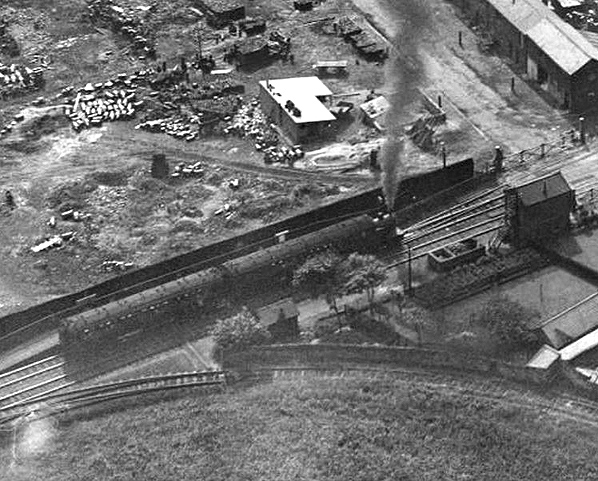
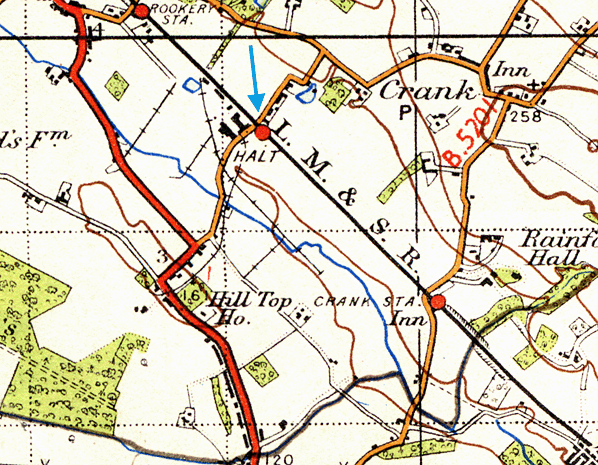



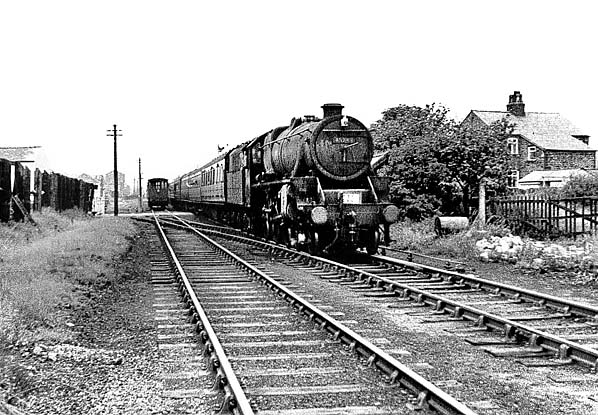

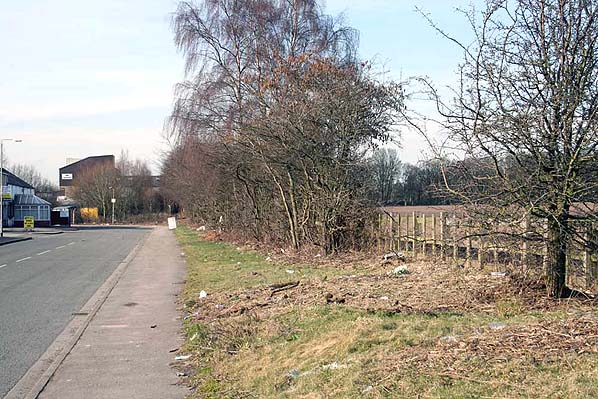
 Home Page
Home Page  Old Mill Lane was located to the west of the small settlement of Crank on the lane after which it was named. The lane crossed the line by means of a level crossing.
Old Mill Lane was located to the west of the small settlement of Crank on the lane after which it was named. The lane crossed the line by means of a level crossing.  On 1 January 1922 the LNWR took over the LYR bringing the entire route between St Helens and Ormskirk under the control of one company. The passenger service pattern remained the same though with Rainford Junction being the point at which both St Helens and Ormskirk services mostly terminated. The July 1922 timetable showed 13 up and 13 down trains Monday-to-Friday. There was an extra train in each direction on Saturdays and there were three trains each way on Sundays.
On 1 January 1922 the LNWR took over the LYR bringing the entire route between St Helens and Ormskirk under the control of one company. The passenger service pattern remained the same though with Rainford Junction being the point at which both St Helens and Ormskirk services mostly terminated. The July 1922 timetable showed 13 up and 13 down trains Monday-to-Friday. There was an extra train in each direction on Saturdays and there were three trains each way on Sundays. 